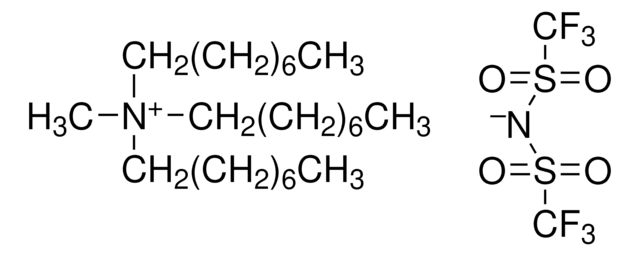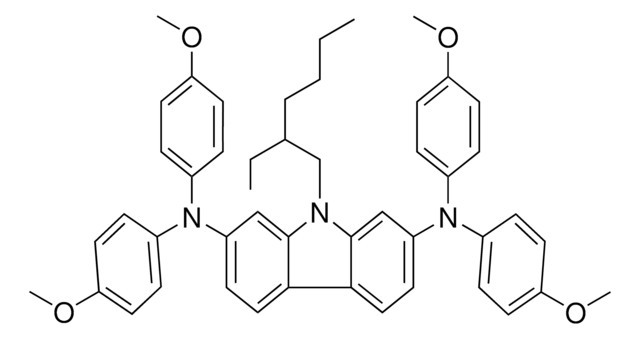추천 제품
분석
≥99%
양식
liquid
구성
H2O, <500 ppm
불순물
≤500 ppm H2O
mp
27 °C
density
1.276 g/cm3
응용 분야
battery manufacturing
InChI
1S/C13H30N.C2F6NO4S2/c1-5-8-11-14(4,12-9-6-2)13-10-7-3;3-1(4,5)14(10,11)9-15(12,13)2(6,7)8/h5-13H2,1-4H3;/q+1;-1
InChI key
XALVHDZWUBSWES-UHFFFAOYSA-N
일반 설명
애플리케이션
관련 제품
Storage Class Code
10 - Combustible liquids
WGK
WGK 3
Flash Point (°F)
230.0 °F
Flash Point (°C)
110 °C
가장 최신 버전 중 하나를 선택하세요:
이미 열람한 고객
문서
Solid-state Li batteries: Review of solid electrolytes, ion conduction, structures, and electrochemical processes.
Ionic liquid electrolytes explored for rechargeable batteries' advancement; future IL development discussed.
활성 필터
자사의 과학자팀은 생명 과학, 재료 과학, 화학 합성, 크로마토그래피, 분석 및 기타 많은 영역을 포함한 모든 과학 분야에 경험이 있습니다..
고객지원팀으로 연락바랍니다.













